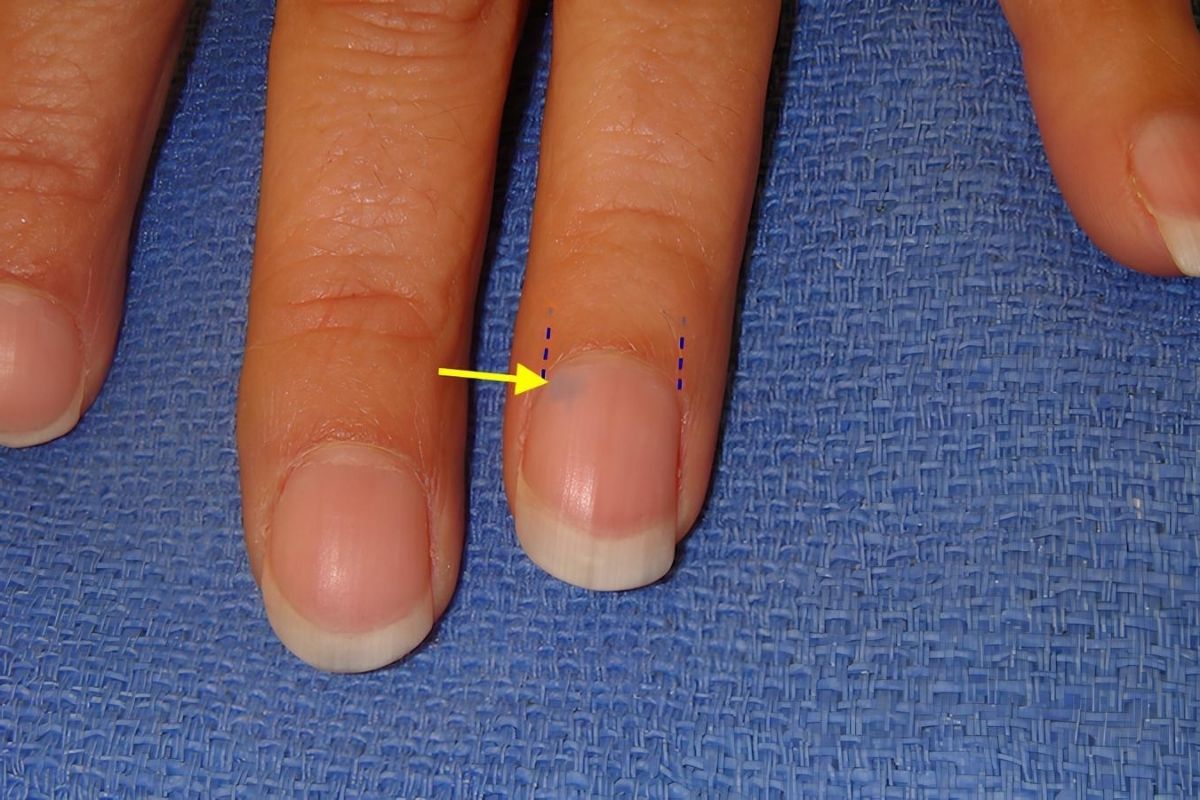
Hildreth's Sign is a fascinating clinical test used in diagnosing vascular conditions, particularly in cases of suspected vascular malformations or arteriovenous fistulas. This test involves elevating the limb and applying a tourniquet to observe changes in the swelling or pulsation of the affected area. Named after Dr. Hildreth, this sign helps doctors differentiate between vascular and non-vascular causes of limb swelling. Understanding Hildreth's Sign can be crucial for medical professionals and students alike, as it provides a simple yet effective method for identifying complex vascular issues. Let's delve into 25 intriguing facts about Hildreth's Sign that highlight its significance, history, and application in modern medicine.
Key Takeaways:
- Hildreth's Sign is a simple test to diagnose painful glomus tumors under the nails. It helps doctors determine the presence of these rare tumors by observing changes in pain when blood flow is altered.
- Early diagnosis through Hildreth's Sign can guide timely treatment, differentiate from similar conditions, and improve patient comfort. However, it may not always provide a definitive diagnosis and requires skilled interpretation.
What is Hildreth's Sign?
Hildreth's Sign is a clinical test used to diagnose a condition called glomus tumor. These tumors are rare, benign, and usually found under the fingernails or toenails. The test helps doctors determine if a patient has this type of tumor by observing changes in pain when blood flow is altered.
-
Named After Dr. Hildreth: The sign is named after Dr. Hildreth, who first described it in the medical literature.
-
Used for Glomus Tumors: Primarily used to diagnose glomus tumors, which are small, painful growths often found in the nail bed.
-
Pain Relief with Tourniquet: The test involves applying a tourniquet to the affected limb. If the pain decreases, it suggests the presence of a glomus tumor.
-
Reappearance of Pain: Once the tourniquet is released, the pain typically returns, further indicating a glomus tumor.
-
Simple and Non-Invasive: Hildreth's Sign is a straightforward, non-invasive test that can be performed in a doctor's office.
How is Hildreth's Sign Performed?
Performing Hildreth's Sign involves a few simple steps. Here's how doctors typically carry out the test.
-
Patient Preparation: The patient is asked to sit comfortably, and the affected limb is exposed.
-
Tourniquet Application: A tourniquet is applied to the limb, usually above the site of pain.
-
Observation of Pain Relief: The doctor observes if the pain diminishes after the tourniquet is tightened.
-
Release of Tourniquet: The tourniquet is then released, and the doctor notes if the pain returns.
-
Comparison with Other Tests: Hildreth's Sign is often used alongside other diagnostic tests for a more accurate diagnosis.
Why is Hildreth's Sign Important?
Understanding the importance of Hildreth's Sign can help appreciate its role in medical diagnostics.
-
Early Diagnosis: It aids in the early diagnosis of glomus tumors, allowing for timely treatment.
-
Avoids Misdiagnosis: Helps differentiate glomus tumors from other conditions that cause similar pain.
-
Guides Treatment: Accurate diagnosis through Hildreth's Sign can guide appropriate surgical or medical treatment.
-
Reduces Unnecessary Tests: By providing a quick and reliable diagnosis, it can reduce the need for more invasive tests.
-
Improves Patient Comfort: Early and accurate diagnosis can significantly improve patient comfort and quality of life.
Limitations of Hildreth's Sign
While useful, Hildreth's Sign has its limitations. It's important to be aware of these to understand the test's full context.
-
Not Always Conclusive: The test may not always provide a definitive diagnosis, especially in atypical cases.
-
Requires Skilled Practitioner: Accurate performance and interpretation require a skilled and experienced practitioner.
-
May Not Detect All Tumors: Some glomus tumors may not respond to the test, leading to false negatives.
-
Pain Variability: Patient pain tolerance and variability can affect the test's accuracy.
-
Complementary Tests Needed: Often needs to be used in conjunction with imaging studies or other diagnostic methods.
Interesting Facts About Glomus Tumors
Since Hildreth's Sign is closely related to glomus tumors, here are some intriguing facts about these tumors.
-
Rare Occurrence: Glomus tumors are rare, accounting for less than 2% of all soft tissue tumors.
-
Common in Fingers: Most commonly found in the fingers, particularly under the nails.
-
Highly Painful: Despite their small size, glomus tumors are known for causing intense pain.
-
Sensitive to Temperature: These tumors are often sensitive to temperature changes, causing pain in response to cold.
-
Surgical Removal: The primary treatment for glomus tumors is surgical removal, which usually provides immediate pain relief.
Final Thoughts on Hildreth's Sign
Hildreth's Sign is a fascinating medical phenomenon. It helps doctors diagnose vascular conditions like Raynaud's disease and thoracic outlet syndrome. By applying a tourniquet, doctors can observe changes in symptoms, offering clues about blood flow issues. This simple yet effective test has been a valuable tool in vascular medicine for years.
Understanding Hildreth's Sign can empower patients to seek proper medical advice. If you experience symptoms like cold fingers or numbness, knowing about this test might prompt you to discuss it with your doctor. Early diagnosis can lead to better treatment outcomes.
So, next time you hear about Hildreth's Sign, you'll know it's more than just a medical term. It's a key player in diagnosing and managing vascular conditions, making a real difference in people's lives. Stay informed, stay healthy!
Frequently Asked Questions
Was this page helpful?
Our commitment to delivering trustworthy and engaging content is at the heart of what we do. Each fact on our site is contributed by real users like you, bringing a wealth of diverse insights and information. To ensure the highest standards of accuracy and reliability, our dedicated editors meticulously review each submission. This process guarantees that the facts we share are not only fascinating but also credible. Trust in our commitment to quality and authenticity as you explore and learn with us.
